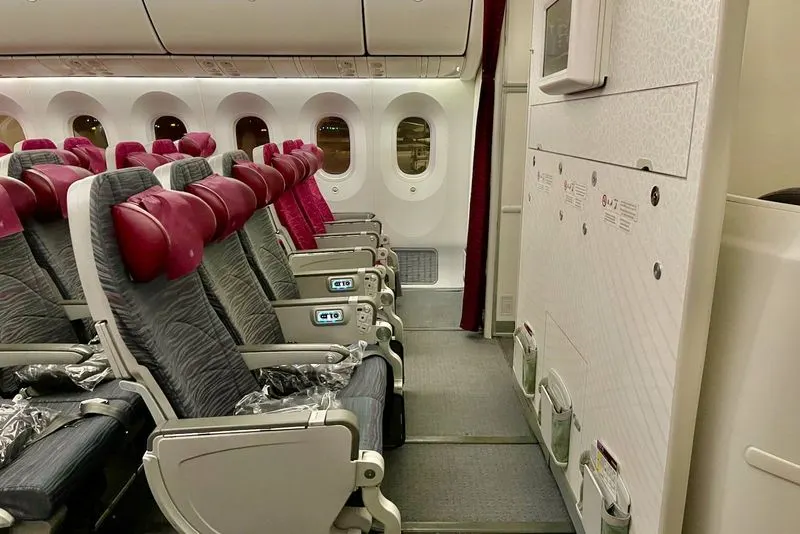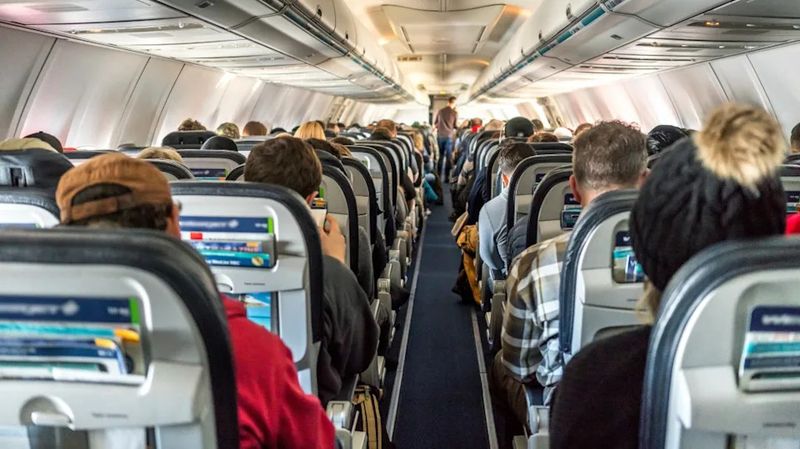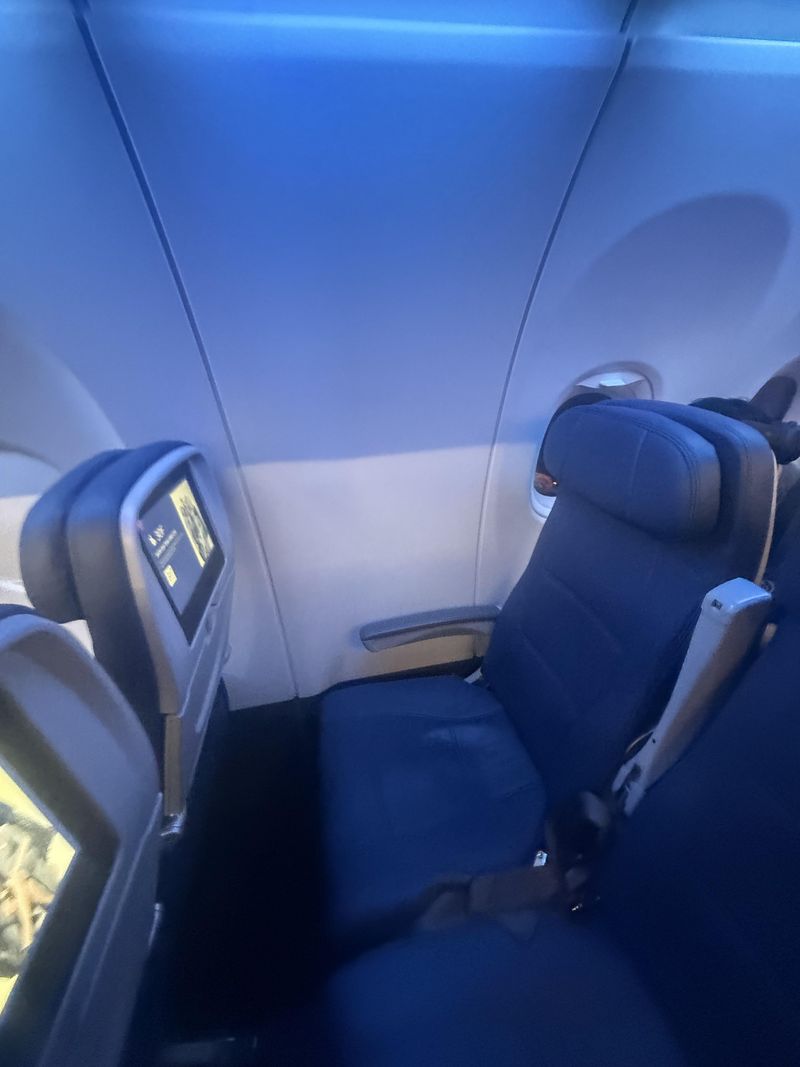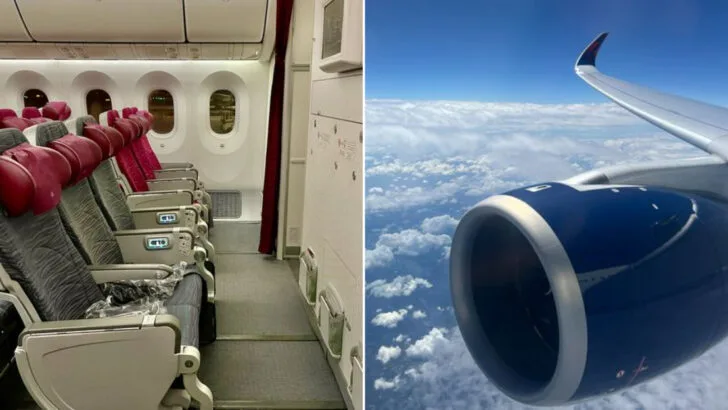Some airplane seats come with hidden trade-offs that can sour even a short flight. From constant foot traffic to armrest battles, these spots often underdeliver on comfort and convenience. Before you click “confirm,” it pays to know which rows routinely disappoint. Read on to dodge the duds and secure a seat that won’t sabotage your trip.
Back-row non-reclining seats

The last row often looks harmless until you settle in for a long flight. Many of these seats don’t recline, leaving your spine begging for mercy on red-eyes. Proximity to lavatories means constant traffic, chatter, and door slams. Odors and queueing passengers can erode personal space. Service can also reach you last, shrinking meal choices. Overhead bins fill fast as nearby crew storage takes priority. Vibration and engine hum add fatigue over time. If comfort matters, avoid this cramped cul-de-sac of the cabin.
Seats beside lavatories

Sitting near lavatories sounds convenient until reality hits. Frequent door openings flood the area with light and noise, especially on night flights. Lines form right at your elbow, bringing crowding and awkward bump-ins. Odors can linger, undermining your attempts to sleep or eat. The constant foot traffic jars your seat, adding micro-disturbances. Flight attendants working nearby chat and clang carts. Privacy vanishes as people hover. Convenience quickly becomes disruption, making these seats a tough sell for comfort-focused travelers.
Bulkhead seats with fixed armrests

Bulkhead rows promise extra legroom, but there’s a catch: fixed armrests. These armrests house tray tables, narrowing the seat width and squeezing hips and shoulders. Storage is limited because you can’t keep bags under a seat in front. You’ll rely on overhead bins, which may be distant. Bassinets can add crying infants in some configurations. Entertainment screens can be far or mounted awkwardly. Legroom can be deceptive if walls push your knees closer. Verify measurements before choosing this “spacious” trap.
Wing-adjacent window seats

Window seats over the wing dampen turbulence slightly but compromise views and noise levels. Engines sit nearby, upping the low-frequency hum that fatigue amplifies over time. Photographers get bland wing views instead of landscapes. Emergency flaps and wing structures obstruct scenery and sun angles. The window can also be misaligned, forcing a neck craned awkwardly. On some aircraft, insulation differences make these spots colder. You’ll still climb over neighbors to exit. For quiet and vistas, these windows often disappoint.
Middle seats in dense configurations

Middle seats are the poster child for discomfort, especially in tight 3-3-3 or 3-4-3 layouts. With shoulders squeezed on both sides, personal space evaporates. Armrest diplomacy becomes a constant negotiation. Sleep is harder without a wall or aisle escape. Overhead bin access gets contested by both neighbors. On long hauls, hydration and bathroom trips require extra coordination. Even with decent pitch, width feels lacking. Unless traveling with companions, these seats rarely justify the compromise.
Exit-row seats with limited recline

Exit rows promise legroom, but some have restricted or no recline to preserve egress space. The upright posture becomes punishing on long flights. Armrests may be fixed, further narrowing the seat. Cold drafts can seep from doors, chilling legs. Carry-ons must be stowed during taxi, takeoff, and landing, delaying access. Safety briefings are more involved, and you must meet eligibility rules. Nearby crew jumpseats add chatter and movement. Verify recline before assuming these are the best seats onboard.
Rows near galley and service areas

Galley-adjacent seats endure clatter from carts, cutlery, and ice bins. Flight attendants work here constantly, so voices and footsteps rarely stop. Bright galley lights spill into the cabin, spoiling sleep. Service carts crowd aisles, making bathroom trips tricky. Odors from reheated meals linger longer. Pre-landing preparations start early right beside you. Even noise-canceling headphones struggle against metallic bangs. For rest and quiet, these seats are a frequent regret.
Misaligned window seats

Not all windows line up with their seats, creating neck-craning disappointment. You might stare at plastic wall instead of sky. Sleeping becomes harder without a proper headrest against the window recess. Photographers lose the shot they boarded for. Misalignment varies by aircraft type and row, so seat maps and photos help. This mismatch also reduces perceived personal space. If you value views and head support, confirm alignment before booking. Otherwise, choose aisle for predictable comfort.

